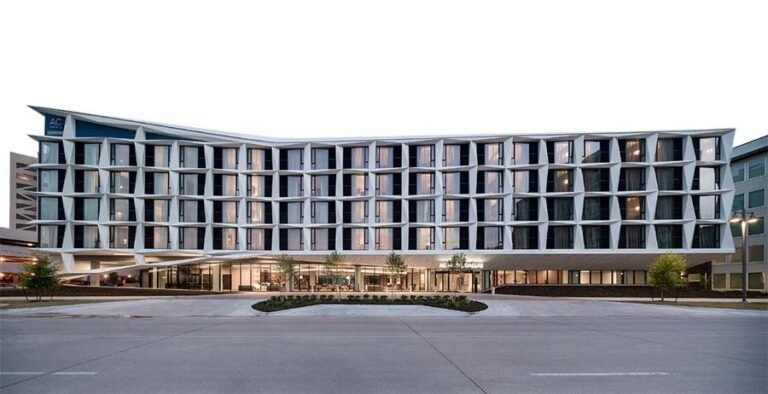Longgang Core Area Overpasses Design / FCHA
Longgang Core Area Overpasses Design / FCHA


Project background
As a pilot area for the network integration of rail transit, bus and slow traffic system proposed by Shenzhen Municipal Government, the “Three Pavilions and One City” area in Longgang stipulates that the major developers must plan and implement the “Tri-Network Integration” transportation system within the scope of 0.8 square kilometers through the restriction of land development conditions. FCHA collaborates with Vanke Urban Research Institute to plan, design and implement the system, a total of 9 overpasses and weatherproof corridors along the street are set up in the central urban area of Longgang, connecting subway stations, bus stations, businesses and residential areas, which has the originally isolated and closed urban functional groups connected together in a three-dimensional way, which realizes the all-weather three-dimensional and convenient traffic network.

Design concept
In order to achieve a three-dimensional connection in the city, overpasses need to adapt flexibly to the site by turning, extending, undulating and zooming in, that is to adapt to different design conditions through variation and growth on the basis of the same underlying logic. The enlightenment brought by the Nine Dragons Picture is also the same. The image of the dragon presents and highlights different emphases in different positions. The craft of traditional Chinese dragon dance also brings inspiration to the standardized module design. A rich overall form can be obtained through the rotation, copy, arrangement and display of a single standard element. With “dragon” as inspiration, combined with different locations of the overpasses, different streamline types will be different, four different types of bridges are used in the nine overpasses of the slow traffic system. Now Bridge 1, Bridge 2, Bridge 3 have been completed, the rest of the bridges to be built.


Type 1: Rotating bridge
For cases where curves need to be changed in the plane, we design a rotating bridge that can turn. The bridge body adopts a standard frame and is arranged at intervals to adapt to the changes of the plane route. Meanwhile, the body frame twists on the route to form a unique space experience. For a more comfortable travel experience, the surface of the bridge is covered with ETFE semi-permeable membrane, and an automatic spray device is installed on the top to further cool the bridge.


The LED lights are embedded in the grooves of the metal frame, and the light that lights up at night highlights the dynamic of the bridge. Currently under construction, Bridge No. 1 connects the entrance and exit of Jixiang Metro Station with the public corridor on the second floor of Tianyu Residential Area.


Type 2: Extension bridge
For the straight line overpass, we designed a bridge with an infinite trend of extension, the dislocated undulating curve on both sides of the bridge deck improves the monotony of the straight bridge body, making more changes in the line of sight during the journey and making the experience more interesting. The panel material covering the reclined shell is of standard size but different in material. It is composed of perforated plate, solid plate and glass, arranged successively from bottom to top to ensure the visual field of pedestrians. It also provides sunshade and rain function while lighting.


The whole curtain wall is divided into panels of uniform size and specification, which are assembled according to the same torsion Angle. In the fixing of the panels, the steel structure intersection point is prevented from molding fixtures to fix the panels. The currently implemented No. 3 Bridge is located on Longxiang Avenue, a major urban road opposite the Longgang Central District Government, connecting several major public buildings in the center of Longgang, including the World Trade Department and the Three Pavillions and One City of Longgang (Science Museum, Youth Palace, Public Art Museum and Book City).


Type 3: waving bridge
In the existing urban area, Bridges sometimes need to avoid obstacles in the vertical direction. We designed a bridge that can be flexibly changed in height through the undulating changes of the bridge body skeleton. The undulating steel frames are arranged at equal distances, reducing the height where they need to be avoided, so that the Bridges can be flexibly intersected within the city. The undulating rhythm also makes longer, linear spaces more pleasant.

Bridge No. 6 connects Times Square and Longcheng Square subway station, crosses Longcheng Avenue and Longgang River, connecting commerce and public transportation

Type 4: Platform bridge
For high-density nodes in cities, Bridges are not only three-dimensional structures, but also supporting platforms for rich urban life scenes. Bridges can be enlarged and evolve from points and lines to surfaces, finally bringing three-dimensional spatial experience to the city.


The No.2 Connecting Corridor of “Floating Islands” is located next to the government of Longgang Central District, connecting Vanke Square commercial complex with World Trade Department Plaza, Tianyu Phase II residential area, commercial pedestrian street, etc. It is a second-floor landscape corridor connecting multiple platforms. The corridor space on the second floor establishes an urban leisure place to solve the traffic problem and improve the quality of the area. No. 2 Connecting Corridor has been released. For details, please click to see.


Nine “dragons” connect the whole city together, that is, nine flyovers summarized by four types being our comprehensive strategy for building a three-dimensional pedestrian system in Longgang’s “three halls and one city” district. These flyovers have the advantages of being visitable, replicable, and quick to build. They can also be quickly adaptive to changes in the topography of the district. Facing the rapid development of urbanization, this kind of multi-district joint development and three-dimensional pedestrian system will further explore the value of urban space and carry positive significance for the development of the city to a higher level.







